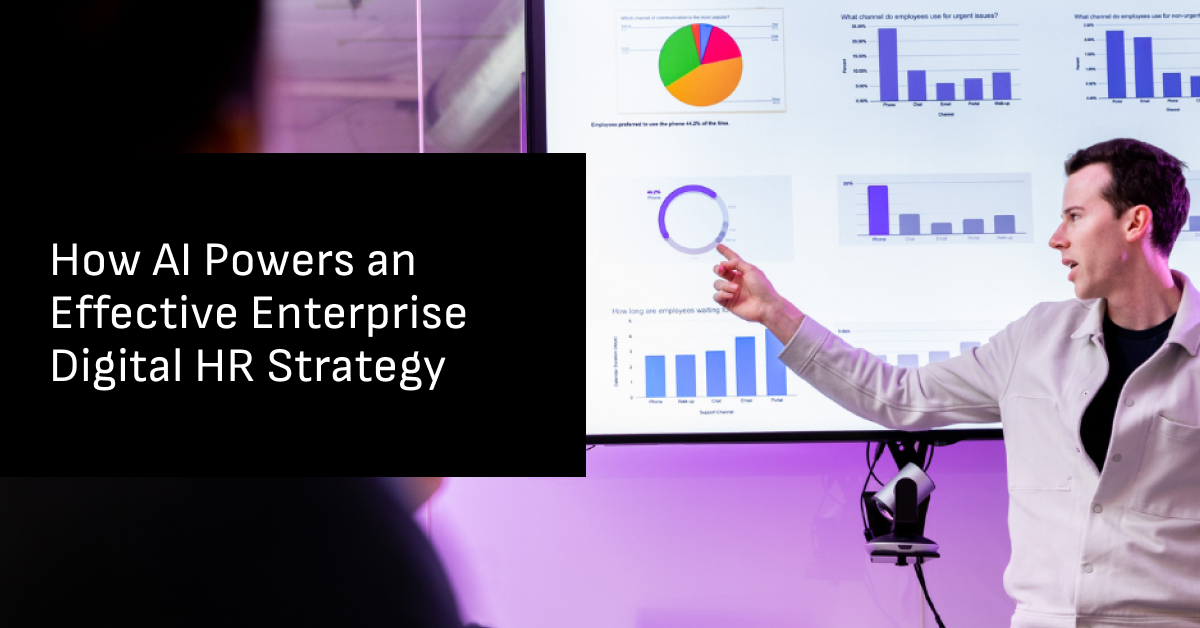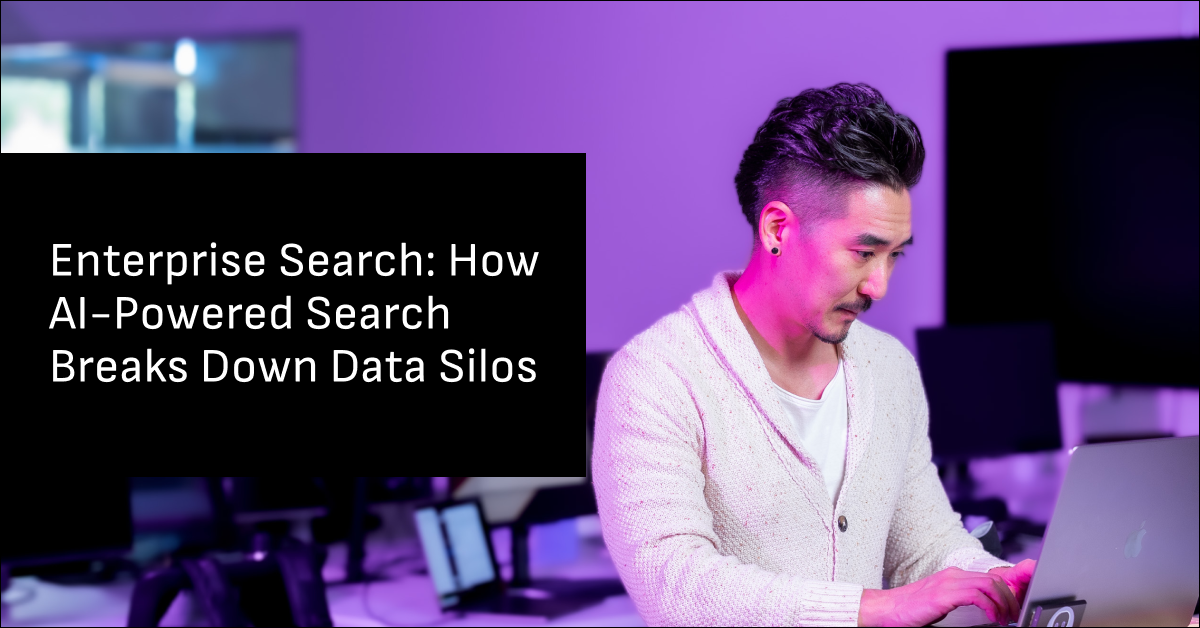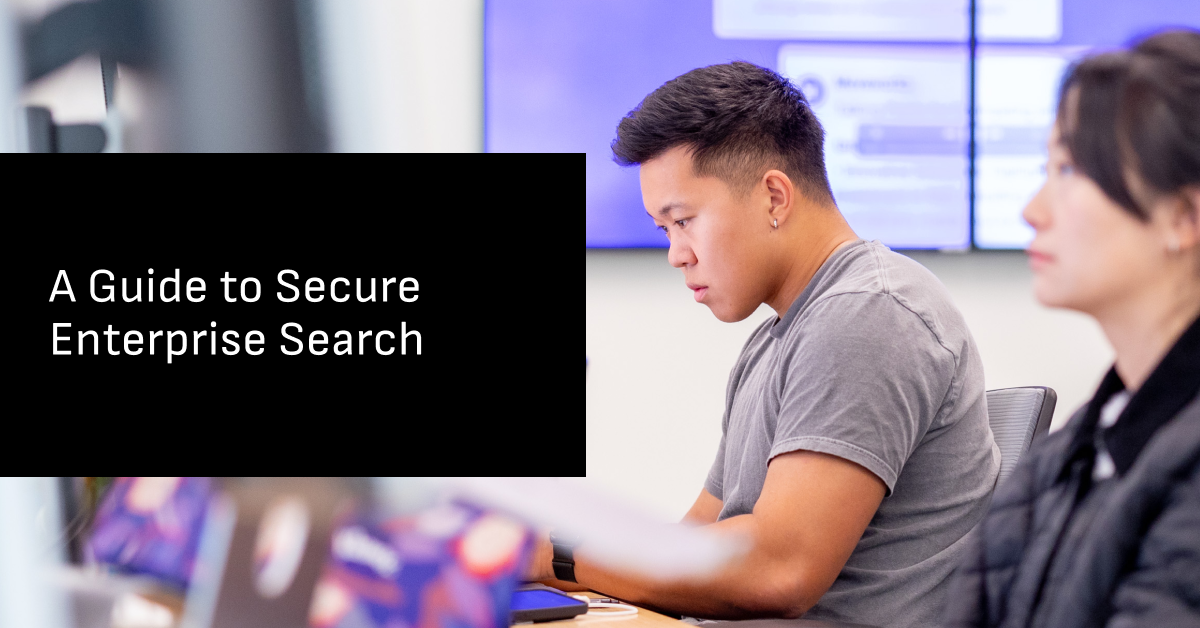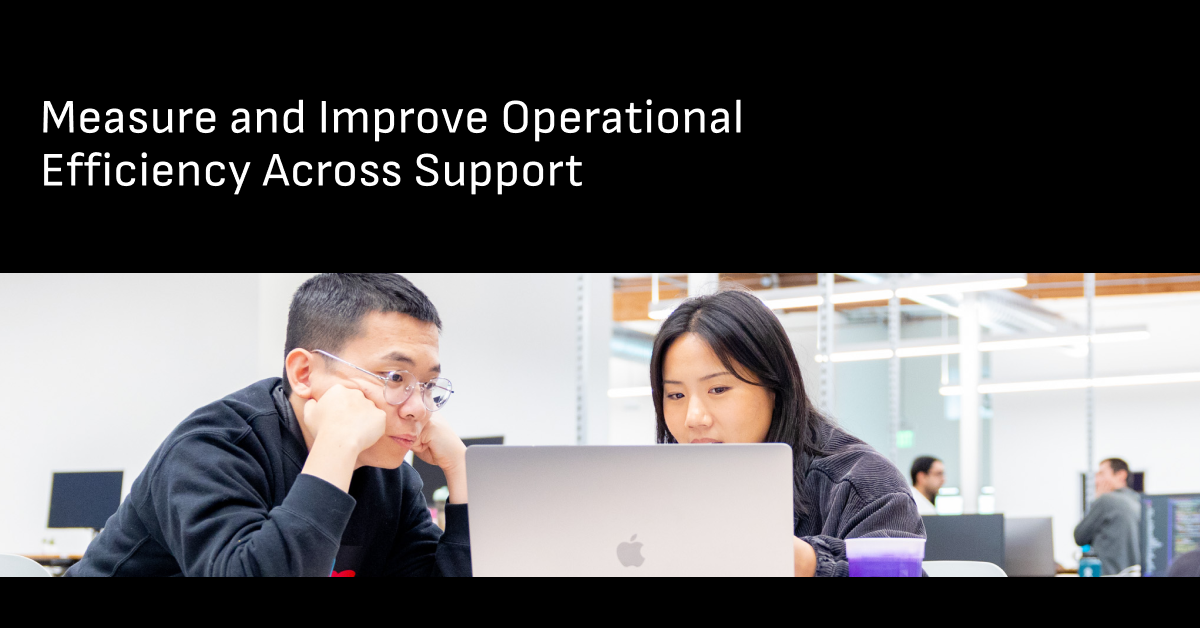Highlights
- A digital HR strategy is essential, not optional. Traditional human resources approaches can’t keep pace with hybrid work, global teams, and rising employee expectations for instant, personalized support.
- True digital transformation goes beyond tool upgrades. It requires reimagining HR’s operating model with connected systems, self-service, AI-driven automation, and data-powered decision-making.
- AI enables scalable, employee-centric HR support. Technologies like NLP, machine learning, and generative AI allow HR to automate repetitive tasks, personalize employee experiences, and proactively resolve issues—often right inside a web browser or in collaboration tools like Slack.
- Five pillars define an effective digital HR strategy: Instant personalized support, workflow automation, unified access to systems, proactive communication, and data-driven optimization.
- Sustainable success requires a phased, cross-functional approach: Aligning HR, IT, and communications around shared goals, integrating systems, building robust knowledge bases, and continuously measuring and improving impact.
HR is stretched across time zones and stacks…and expectations keep rising.
If you don’t modernize your HR systems now, your team will soon be drowning in routine tasks while employees grow frustrated—putting your productivity and engagement at risk.
Digitizing HR starts with a strong strategy. From the common barriers to a step-by step overview of how to build your strategy, this blog post will guide you towards transformational success.
It's not simple, but when done right you'll end up with advanced HR processes, greater automation, cost savings, high employee adoption and better employee experience too.
A digital HR strategy is the foundation for delivering intelligent, scalable support that meets employees where they are, whether in Slack, Teams, or email, without burning out your HR team. By reconsidering how you use automation and artificial intelligence (AI), you can finally close the gap between what employees need and what your team can deliver.
What is a digital HR strategy?
A digital HR strategy is the roadmap for how an organization uses digital technologies to modernize legacy HR systems and processes, simplify and automate time-consuming routine tasks, and deliver faster, more personalized support to employees.
But it’s deeper than just digitizing existing HR processes. It’s about automating repetitive tasks and enabling HR teams to use modern tools (like self-service portals, connected platforms, insights from AI dashboards, sentiment monitoring, or AI Assistants) to give everyone a more seamless user experience.
The impact goes beyond efficiency. With a smart digital approach, HR can move from being the team that simply keeps things running to a true driver of business growth. That means HR professionals spend fewer hours answering the same questions, and more time building proactive solutions that anticipate employee needs and scale across the organization.But I Bu
A strong digital HR strategy typically includes:
- Systems integration: Ensuring HR tools and platforms share employee data seamlessly
- Self-service enablement: Giving employees instant personalized answers to their questions about policies, benefits, and procedures—often through AI agents in platforms like Slack or Teams—without waiting on an HR team member
- Employee-centric experience design: Shaping HR processes around real-world workflows
- Data-driven optimization and decision-making: Using data analytics to make smarter, proactive choices
- Automation of repetitive, manual workflows: Automating high-volume administrative tasks such as new-hire data entry, and PTO approvals, freeing up HR teams for more strategic work.
It’s just as important to define what a digital HR strategy isn’t.
It’s not a portal relaunch, not a ticket-deflection stunt, and not a one-off tool upgrade. Those efforts may digitize processes, but they don’t change how HR actually operates.
A real strategy reshapes how HR actually operates. That means clearly defining who owns decisions, redesigning how services are delivered, and putting the right guardrails in place with a thoughtful change management plan.
Why traditional HR transformation falls short in the age of AI
In general, the hallmarks of failed digital transformation projects are higher costs, frustrated employees, and outdated systems that no longer fit the business. Similarly, many standard HR transformation approaches fall short because they add more tools, fail to drive adoption, and lack clarity, leaving employees confused and HR teams managing fragmented systems.
And that’s not the end of the fallout. Failed transformation attempts be because of:
- Tool sprawl, which creates confusion
- Stalled implementation
- Faulty automations that erode user trust (which can translate into abandoned, unused self-service tools)
All of these factors can result in a growing case management queue, leaving your already-busy HR staff even more stretched.
The cost of failure isn’t small, either.
Complex implementations and ongoing maintenance make these programs expensive and delay ROI. And if employees don’t see value in these tools, they’ll be unlikely to adopt them, meaning that case management costs rise, compliance risks creep in, and employee satisfaction can start to slide.
Hybrid and global work have only raised the stakes. More regions bring more complexity: new tools, languages, regulations, and local contexts that standard strategies and siloed tools simply can’t keep up with.
That’s why traditional approaches are no longer sufficient. The way forward is a digital strategy that’s flexible, data-driven, and AI-powered.
When employees can instantly find what they need—whether that’s a policy, a resource, or a quick answer—they feel supported and engaged. And when HR leaders can tap into people analytics, they gain the clarity to improve retention, shape better experiences, and adapt to change as it happens.
How AI enables a more effective HR strategy
AI and automation strengthen HR by functioning as tools that help tackle challenges from multiple angles with specialized new technologies:
- Robotic process automation (RPA): Automates time-consuming administrative tasks like payroll processing, new-hire data entry, and PTO approvals so HR can spend less time on admin and more time on strategy.
- Natural language processing (NLP) and conversational AI: Powers chatbots and virtual assistants that deliver quick, accurate answers to policy or benefits questions, reducing ticket volume and keeping employees from getting stuck in the system.
- Machine learning (ML) and predictive analytics: Surfaces patterns in HR data to flag risks (like potential attrition) or highlight opportunities (like which candidates are most likely to succeed), giving leaders the insights to act early.
- Generative AI (GenAI): Speeds up writing-heavy tasks such as job descriptions or candidate messages, ensuring they’re consistent, polished, and tailored without taking hours to draft.
- Agentic AI: Systems that understand employee requests, plan multi-step actions, and—unlike GenAI—orchestrate execution across business systems like Workday and ServiceNow. These digital HR solutions go beyond efficiency gains—they help HR teams anticipate needs, act on insights, and deliver a more responsive, scalable strategy.
5 pillars of an effective digital HR strategy
The following five pillars show how AI-powered HR solutions can create a better employee experience that feels effortless, personalized, and supportive:
1. Instant, personalized employee support
Employees need quick answers, whether it’s about vacation policies, benefits, or local HR procedures. Instead of searching through portals or waiting for email replies, AI agents in HR tech can provide instant support right inside the platforms employees already use, like Slack, Teams, or email.
Better yet, those responses can be tailored to each person’s role, department, or location, so the guidance feels relevant and accurate. By meeting employees where they work, HR not only saves time but also shows it values the employee experience. The result is support that feels efficient and human.
2. Automation of repetitive, manual workflows
Repetitive tasks eat up about 20% of HR’s week—everything from updating employee info to confirming leave balances. AI can take over those high-volume requests, delivering quick and contextual answers 24/7.
That doesn’t just speed things up for employees. It also gives HR teams more breathing room to focus on the human side of their role: talent management, culture, strategy. When the repetitive work runs quietly in the background, teams can shift from being reactive administrators to proactive strategists
3. Unified access across disparate HR systems
Most companies rely on a patchwork of platforms: Workday for payroll, SuccessFactors for performance reviews, ServiceNow for IT tickets, and the list goes on. While each tool has a purpose, employees often end up lost in the gaps between them, which can lead to a fragmented employee experience.
A strong digital HR strategy changes that by pulling everything into one cohesive ecosystem. With AI assistants acting as a connective layer, employees don’t have to worry about where information lives in a maze of disconnected tools. They just get what they need, when they need it. To them, HR support feels simple and seamless—even if the backend is complex.
4. Proactive communication and campaigns
More often than not, employees only hear from HR when they go looking for answers. But a proactive strategy changes that.
With AI-driven communication, HR can deliver reminders, announcements, or campaign messages directly to the right people at the right time.
That could mean (but isn’t limited to):
- Nudging managers about performance reviews
- Alerting employees to policy changes
- Reminding teams of benefits enrollment deadlines
This kind of timely, proactive outreach prevents last-minute scrambling and builds trust because it demonstrates consideration for, and investment in, employee success. It turns HR into a partner that helps employees stay informed and engaged.
5. Data-driven optimization
Every AI interaction generates useful signals: what employees search for, how quickly tickets get resolved, which resources actually get used. Capturing and analyzing that data helps HR leaders identify gaps and gauge their initiatives’ impact.
With those insights, HR evolves alongside the workforce instead of falling behind it. Leaders can see where to invest their time and budget, making informed decisions grounded in real employee behavior. Over time, the strategy itself becomes adaptive, getting sharper and more effective with every interaction.
How to build your digital HR strategy
Rolling out the latest tools won’t make your HR strategy “digital” by itself. The real shift comes from changing mindsets, building stronger partnerships between HR, IT, and communications, and laying a foundation that can grow with the business.
A helpful way to think about this journey is in 90-day phases:
- Weeks 0–2: Define your vision and business objectives
- Weeks 3–6 Assess your current HR capabilities and pain points, Integrate and optimize your tech stack
- Weeks 7–10 Build knowledge and communication channels
- Weeks 11–12: Launch, measure, and continuously improve
Assigning ownership across functions ensures accountability.HR sets the vision, IT drives integrations, and communications helps employees adopt the changes. With this shared accountability, your HR team can move beyond short-term fixes and instead design an HR experience that grows with the organization.
Not sure where to start? Here are the key steps for building an effective strategy:
1. Define your vision and business objectives
Every strong digital HR strategy starts with clarity. What do you want to achieve? Is your goal to improve onboarding, raise engagement, reduce costs, strengthen retention? Tie these goals directly to business priorities so HR is seen as a growth driver rather than merely a support function.
From there, form a cross-functional team (HR, IT, and communications) and agree on what “great” should look like. To keep the roadmap focused, use a simple filter:
- Does this reduce time-to-resolution?
- Does this increase self-service?
If the answer is “no,” it probably doesn’t belong on your roadmap. Anchoring business objectives to measurable outcomes turns vision into action.
2. Assess your current HR capabilities and pain points
Once you set your vision, take stock of where you are today. Look at your core HR functions—recruitment process, onboarding, benefits, performance management, etc. Which ones are heavily manual and slow? Where do employees struggle to get timely support?
An audit of your service model often reveals repeating issues. To prioritize, focus first on improvements that are easy to implement but deliver exceptional value.
For example, automating common benefits questions or streamlining ticket routing can deliver immediate impact. Use a scorecard to rate opportunities against metrics like time-to-resolution or percentage of requests handled in-channel.
Listing one metric per row helps avoid vague goals and highlights the processes most ready for digital transformation. This structured approach ensures quick wins and builds momentum for bigger changes.
3. Integrate and optimize your tech stack
Your HR technology stack only delivers value if the tools work together. Start by mapping out your current HR system platforms, like ServiceNow, Workday, and payroll tools, and map how employees interact with them.
Once the stage is set, the priority is creating a unified experience.
Cloud-based platforms that are easy to adopt, conversational interfaces that connect multiple systems, and AI capabilities that automate routine requests or surface real-time insights all play a role. For example, an AI layer that handles password resets or policy FAQs allows HR staff to focus on higher-value conversations.
The right tech stack lays the foundation for scalable, long-term digital HR success. Instead of worrying about which system holds their data, they simply get the answers and support they need.
4. Build knowledge and communication channels
Imagine being a new hire trying to find a leave policy buried in a 30-page PDF with no table of contents. Yikes. A strong knowledge base solves that problem.
Start by curating a knowledge base that’s organized, up-to-date, and easy to search. Then layer in conversational AI to surface the right information instantly, whether that’s a leave policy, benefits details, or guidance on career development.
But knowledge is only half of the equation: Communication also matters.
Rather than waiting for employees to ask, HR can reach out proactively with timely reminders, updates, and resources through the channels people already use every day, like Slack, Teams, or email. Together, reliable self-service and proactive outreach reduce ticket volume and keep employees engaged with HR as a natural part of their workflow.
5. Launch, measure, and continuously improve
The most successful digital HR strategies roll out in phases.
Start small with a pilot group, learn from their feedback, and gradually expand adoption across the organization. This gradual adoption lowers risk while building credibility and buy-in.
Measuring results is just as critical as the rollout itself. Metrics like time-to-fill, cost per hire, engagement scores, and retention rates reveal what’s working and where things need to improve.
Acting on these insights ensures the strategy never sits still. Instead, it evolves with changing workforce expectations and new business priorities. The result is a living system that keeps HR responsive and closely aligned with long-term business goals.
Enable scalable digital HR with Moveworks
A digital HR strategy is the foundation for creating employee experiences that can truly scale. But making that vision real takes more than layering on new tools. It requires a platform built to unify, automate, and evolve with your workforce.
Moveworks is that platform, bringing every pillar of a modern HR strategy to life through:
- Personalized employee support with an advanced, multilingual AI Assistant that resolves questions instantly, right inside Slack, Teams, or email, significantly reducing HR’s workload. Johnson Controls used Moveworks AI Assistant was able to lower HR call volume by 40%.
- Workflow automation powered by agentic AI and custom agents via Agent Studio, streamlining processes like onboarding, leave requests, and policy updates so they run smoothly in the background.
- Unified access to HR systems with deep integrations, so employees don’t waste time bouncing between portals—they simply ask and get what they need.
- Proactive communication delivered through built-in campaign tools that let HR reach employees with timely, personalized updates before deadlines become a scramble.
- Data-driven optimization using Employee Experience Insights, giving leaders visibility into adoption, impact, and opportunities to refine digital workflows. Research shows that teams with higher engagement are more productive. Visibility is the first step towards improvement.
With these capabilities in place, your digital HR strategy isn’t static—it evolves with your workforce, getting smarter and more powerful over time.
Request a demo today to see how Moveworks can help you scale HR with intelligence and impact.
Frequently Asked Questions
Employees want instant answers and also value empathy and nuanced judgment. HR leaders can balance these by automating repetitive, transactional requests while reserving human intervention for complex, sensitive, or high-stakes situations like conflict resolution or career development discussions.
Frequent pitfalls include treating digitization as a one-time tool deployment, underestimating the change management required for adoption, neglecting to involve cross-functional teams, and failing to define measurable success metrics from the outset.
Enterprises can use multilingual AI assistants and region-specific workflows that adapt to local policies while still feeding into a unified global HR system. Strong governance frameworks ensure compliance while preserving consistency across regions.
Beyond traditional HR expertise, professionals will benefit from skills in data literacy, change management, vendor evaluation, and digital employee experience design. These capabilities help HR teams partner effectively with IT and business leaders.
ROI can be demonstrated through metrics like:
Reduced time-to-resolution
Higher self-service adoption
Improved employee satisfaction scores
Lower attrition
HR cost savings
Over time, tying these improvements to broader business outcomes (like productivity or retention) creates a clear case for ongoing investment.
Table of contents



